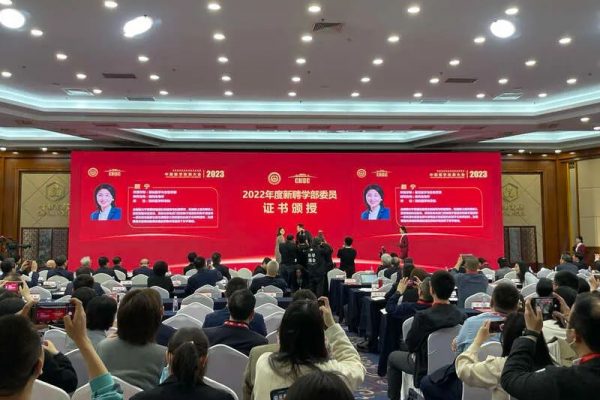芯片中院发布微系统所张祥最新上海团队综述文章: 给光量子电路的波集成连接确定性科光源及其后导微系统调度控制方法
FUTURE远见| 2022-09-09
Future|远见
Future|远见future选编
该综述总结了芯片集成的确定性量子光源的研究进展和挑战,系统讨论了适用于大规模光量子回路的量子调控技术手段。
光量子比特具有相干时间长、多自由度编码、传播速度快等优点。基于光量子比特的集成量子光子回路(IPQC)具有结构紧凑、稳定性高、易于操控等优势,可以构建扩展具有优异性能且丰富功能的光量子信息应用系统,因而在量子通信、量子传感和量子计算等领域引起广泛重视。目前,最为普遍应用的片上量子光源依赖于光子器件中的非线性光学响应,但这种量子光源具有概率性和随机发射的特点,且不可避免地存在多光子对发射的问题,难以扩展并很难高效地应用在大规模集成光量子芯片中。这篇文章系统综述了可用于探索片上集成化“确定性”量子光源的不同材料平台,并特别关注和讨论了应用于波导耦合量子光源主流量子调控方法的研究进展。
为解决大规模集成光量子芯片对高性能量子光源的重要需求,一种可行的方案是在大规模集成光量子芯片中集成“确定性”的量子光源,例如半导体量子点、金刚石色心、二维材料缺陷态等。纳米尺寸结构或晶体缺陷的引入和低维半导体被广泛研究,为实现接近完美的确定性量子光源提供重要量子材料和器件基础。文章总结了迄今为止基于单片式和混合集成构架的多种波导集成确定性量子光源,包括荧光分子(single molecules)、自组装量子点(self-assembled quantum dots)、宽禁带半导体色心(color centers)和二维材料(2D materials)等。
全固态量子光源目前在性能和灵活性方面处于领先地位,能以较高效率确定性地产生单光子态,且具有优异的单光子纯度和全同性;通过与片上无源光子器件的集成,可以形成更复杂的量子架构以实现量子信息处理的实际应用。同时,论文总结了主要的几种集成方法的研究现状,包括单片集成(monolithic integration)²、直接晶圆键合(direct-wafer bonding)³、取放组装(pick-and-place assembly)⁴、转移印刷(transfer-printing)方法⁵⁻⁶以及低温原位电子束光刻(in situ EBL)⁷,讨论了这些方法的潜在应用,并比较了它们的优缺点,为未来大规模集成光量子芯片的微纳制造工艺提供参考。
图1 | 基于低损耗材料平台的量子光源-波导混合集成方法,用于高耦合效率的单光子产生;同时利用快速可重构的光波导元件,对相应光学模式中的单光子进行稳定操控,实现集成化的量子系统。
为了克服应力、形状等对量子光源周围电磁环境的扰动而带来的退相干过程,消除光源之间的频谱展宽,进而提升单光子的全同性等光学品质,实现单个量子比特之间的相干互联。本文讨论了各种适用于波导耦合量子光源的后生长调谐技术,如利用热场(thermal tuning)、磁场(magnetic field tuning)、电场(electric field tuning)、应力场(strain tuning)等。这些调控手段面临着诸多研究挑战,如克服其非均匀频谱展宽,单个光源的局部精细调谐,提升光源-波导的耦合效率,实现近完美的单光子性、不可区分性等,这是采用确定性量子光源实现大规模集成IPQCs亟待解决的问题。
表1 | 基于片上量子光源的后生长调谐技术,实现单光子源能带结构、光学特性的精细操控。
IPQCs的最终目的是将传统光学仪器缩小到光子芯片上,来实现量子比特的产生、操控、存储、探测,实现更具鲁棒性、高复杂度的光学平台来完成实际的光量子技术应用。尽管该领域已经取得了长足的进步,如可控非(CNOT)门、片上玻色采样、多维量子纠缠等,但在单片或混合光子回路上集成全固态确定性量子光源仍处于起步阶段。器件性能以及光子回路复杂性和功能性仍可以进一步优化,以便最大限度地发挥其在实用光量子信息处理过程中的潜力,实现量子计算优越性、远距离量子网络等。
Waveguide-coupled deterministic quantum light sources and post-growth engineering methods for integrated photonic quantum circuits
Photon qubits are widely explored due to their prominent characteristics, including extremely weak dephasing, speed-of-light transmission, and the rich degrees of freedom to encode quantum information. Integrated photonic quantum circuits (IPQCs) have attracted increasing attention in recent years due to their widespread applications in quantum information science. While the most envisioned quantum technologies such as quantum communications, quantum computer and quantum simulations have placed a strict constraint on the scalability of chip-integrated quantum light sources. In this work¹, we review solid-state material platforms for exploring deterministic on-chip quantum light sources, with a special focus on the remarkable progress on waveguide-coupled quantum emitters.
With the rapid development of the chip-scale integration of deterministic quantum emitters, the field of IPQCs has raised new challenges and opportunities. By introducing size-confined nanostructures or crystal imperfections, low-dimensional semiconductors have been broadly explored as chip-scale deterministic single-photon sources (SPSs). Thus far a variety of chip-integrated deterministic SPSs have been investigated across both monolithic and hybrid photonic platforms, including molecules, quantum dots, color centers and two-dimensional materials. These all-solid-state SPSs are currently setting new state-of-the-art in terms of performance and flexibility, and they are proven suitable for on-chip sources of quantum light resulting from their unprecedented brightness, purity, and indistinguishability.
Meanwhile, we highlight the advanced development of heterogenous integration methods, including direct-wafer bonding², pick-and-place³, transfer-printing methods⁵⁻⁶ and in-situ EBL⁷. The potential and application of these methods are discussed, and their strengths and shortcomings are also compared in the review paper.
To achieve fully-fledged quantum engineering of optical properties, various chip-integrated post-growth tuning methods have been discussed. In this context, a crucial next step is to develop suitable quantum engineering techniques for controlling the optical properties of WG-coupled SPSs via strain tuning, thermal tuning, electric field tuning, and magnetic field tuning. This introduces additional requirements. First, quantum engineering technique could ensure a high-quality photon emitter interface essential for funneling quantum light from quantum emitters to passive architecture. Second, suitable quantum engineering technique can circumvent the challenges associated with the spectral discrepancies of WG-coupled SPSs, thus ensuring quantum operations between different identical nodes for complex quantum algorithms. This is highly demanded for realizing fully functional quantum photonic chips. The third and most important one, an on-demand and indistinguishable single photons, which enable the generation of close-to-ideal single- and entangled-photon states, is the essential component enabling high-performance photonic quantum applications.
The ultimate goal of IPQCs is to transfer table-top experiments of bulky optics to miniaturized photonic chips, offering robust platforms to perform practical photonic quantum technologies with enhanced complexity and stability. Despite the considerable progress, integration of all solid-state deterministic quantum light sources on both monolithic or hybrid photonic circuits is still in its infancy. The device performance, as well as the circuit complexity and functionality, is definitely amenable to the further optimization in order to maximize their capability in practical photonic quantum technologies.
参考文献:
[1] Wang,X.-D. et al. Waveguide-coupled deterministic quantum light sources and post-growth engineering methods for integrated quantum photonics. Chip 1,100018 (2022).
[2] Wang, Y., Jöns, K. D. & Sun, Z. Integrated photon-pair sources with nonlinear optics. Appl. Phys. Rev. 8, 011314 (2021).
[3] Katsumi, R. et al. In situ wavelength tuning of quantum-dot single-photon sources integrated on a CMOS-processed silicon waveguide. Appl. Phys. Lett. 116, 041103 (2020).
[4] Kim, J.-H. et al. Hybrid integration of solid-state quantum emitters on a silicon photonic chip. Nano Lett. 17, 7394–7400 (2017).
[5] Katsumi, R. et al. Quantum-dot single-photon source on a CMOS silicon photonic chip integrated using transfer printing. APL Photonics 4, 036105 (2019).
[6] Osada, A. et al. Strongly coupled single-quantum-dot–cavity system integrated on a CMOS-processed silicon photonic chip. Phys. Rev. Appl. 11, 024071 (2019).
[7] Schnauber, P. et al. Deterministic integration of quantum dots into onchip multimode interference beamsplitters using in situ electron beam lithography. Nano Lett. 18, 2336–2342 (2018).
论文链接:
https://www.sciencedirect.com/science/article/pii/S2709472322000168
关于Chip
Chip是全球唯一聚焦芯片类研究的综合性国际期刊,已入选由中国科协、教育部、科技部、中科院等单位联合实施的「中国科技期刊卓越行动计划高起点新刊项目」,为科技部鼓励发表「三类高质量论文」期刊之一。
Chip期刊由上海交通大学与Elsevier集团合作出版,并与多家国内外知名学术组织展开合作,为学术会议提供高质量交流平台。
Chip秉承创刊理念: All About Chip,聚焦芯片,兼容并包,旨在发表与芯片相关的各科研领域尖端突破性成果,助力未来芯片科技发展。迄今为止,Chip已在其编委会汇集了来自13个国家的68名世界知名专家学者,其中包括多名中外院士及IEEE、ACM、Optica等知名国际学会终身会士(Fellow)。
Chip第三期将于2022年9月在爱思唯尔Chip官网以金色开放获取形式(Gold Open Access)发布,欢迎访问阅读文章。
爱思唯尔Chip官网:
https://www.journals.elsevier.com/chip
Warning: Invalid argument supplied for foreach() in /www/wwwroot/www.futureyuanjian.com/wp-content/themes/future/single-news.php on line 41



